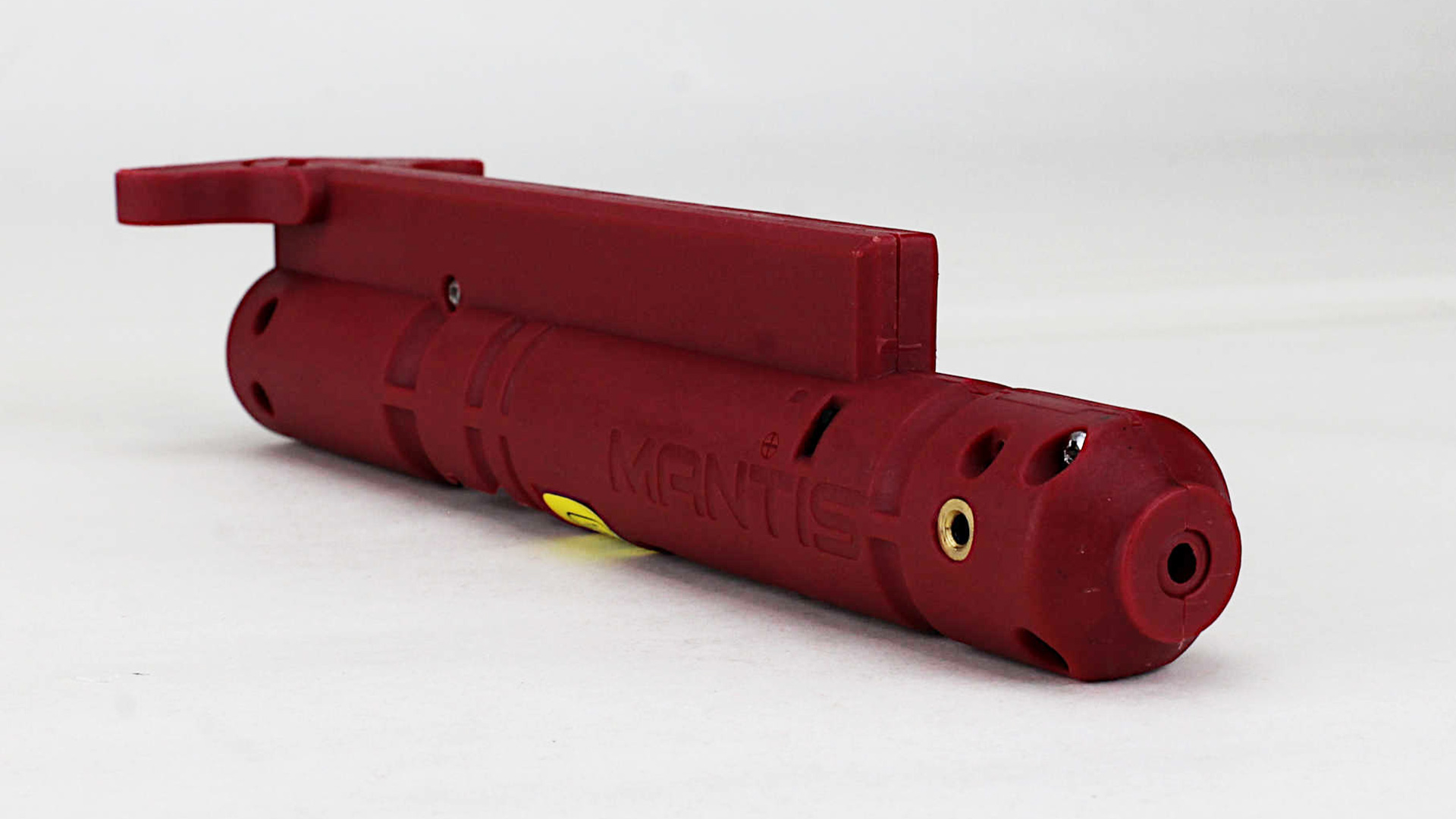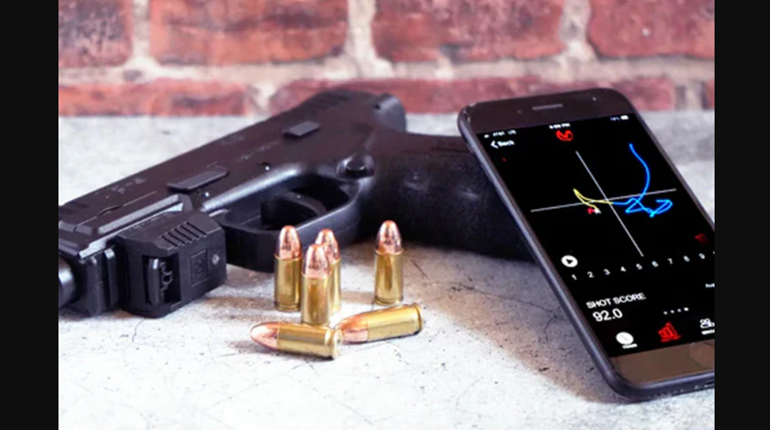
Electronic firearms training devices enhance dry-fire practice by providing visual feedback. Now, a new laser device for the AR-15 from Mantis improves dry-fire practice for rapid-fire stages by also resetting the trigger for true semi-automatic action. AR-15 competitors can finally practice the timing of rapid-fire stage shots during dry-fire practice with the Mantis Blackbeard.

Blackbeard is a two-piece unit, an integral laser and mechanical device replacing the AR-15’s charging handle and bolt carrier group (BCG), and a battery unit that takes the place of the magazine. Four metal contacts, two on the bottom of the laser unit and two on the top of the battery, make the electrical connection. Both units are a deep red color, showing at a glance that the rifle is in a safe handling condition.
The battery is about one-half-inch longer than a standard 20-round magazine, and is rechargeable via an included USB cable that plugs into any so-equipped device, such as a computer. Mantis claims 100,000 shots per charge. The upper unit “fires” a green laser that is adjustable for windage and elevation. A tiny two-position switch selects between constant-on for adjusting, and flash-once when the trigger is pressed. All three controls are accessible through the AR-15’s ejection port when the device is installed. Mantis includes an Allen wrench for making elevation and windage adjustments, which can also serve to flick the miniscule, recessed switch.
Center sights to laser
Dry firing the Blackbeard in the home will require adjusting your sight settings, particularly the elevation, to take into account both the sights’ height above the bore line and the distance from the muzzle to the target. The laser sends a beam of light in a straight line, whereas the rifle’s sights are adjusted for lobbing a bullet in an arc to strike a target at a specific distance. Sights (and reticles) above the bore line mean the laser “dot” will appear well below the target at close range.

In my A2-style, iron-sighted National Match AR-15 with the rear sight set at its 200-yard zero and a target mounted four feet away, Blackbeard’s laser “dot” struck about 2.5 inches below the target with a six o’clock hold. Moving back to 20 feet, the laser still struck 1.5 inches low. It was necessary to run the rear sight up almost to its stop, and dry fire from 40 feet away in order for the laser to hit center X with a six-o’clock hold sight picture.
Installing the Blackbeard in my flat-top National Match AR-5 mounted with a Hi-Lux XTC scope produced the same initial results, as both rifles’ front sight and reticle centers are 2.4 inches above bore center. To strike target center required adjusting the scope’s elevation up 100 clicks (25 minutes) and dry-firing from 20 feet away.

Moving Blackbeard next to a flat-top AR-15 carbine mounted with a 16-inch barrel and red-dot-type optic 2.1 inches above bore center required a little adjustment to the laser’s elevation and windage. The laser’s green dot and the optic’s red dot superimposed on the target center at a distance of about 15 feet.
Trigger feel
Dry firing is not just about sight picture, it is also about trigger control. Blackbeard is a mechanical, as well as electronic, device. It does not interfere with the trigger’s takeup or release, and these feel no different than when dry firing without Blackbeard. However, Blackbeard’s automatic mechanical hammer reset function produces a much different trigger “feel” after the shot, with two additional audible clicks and accompanying taps to the trigger that are felt through the trigger finger. What the dry-firing shooter hears and feels first when pressing the trigger is the normal click of the hammer release, which is stopped by the Blackbeard device. The device then immediately “kicks” the hammer down to reset it, which the shooter hears and feels in the trigger finger. Then, when releasing the trigger, the shooter hears and feels a third tap, as the disconnector releases the hammer to re-engage the sear.

In dry firing without Blackbeard, there is no automatic reset—we must manually cycle the charging handle—so all the dry-firer hears and feels is the single hammer fall. When live firing, the sensations of automatic reset and disconnector release are masked by the noise and recoil. With the Mantis Blackbeard, the dry-firer feels a tap-tap-tap to the trigger finger with each shot.
Timing training
This automatic reset of the hammer by Blackbeard is a boon to practicing rapidfire stages when dry firing. Lacking a Blackbeard, simulating 10 rapid-fire shots isn’t possible without manually cycling the AR-15’s charging handle for every shot, which we don’t do in live fire and which means dry-fire rapid-fire practice isn’t fully realistic. With Blackbeard, the shooter can remain in position and practice the proper timing of 10 rapid-fire stage shots, which is a critical aspect of High Power competition, as every competitor who has ever watched a target descend into the pits with one round still in his or her magazine knows.

Mantis’s Blackbeard provides the dry firer with instant visual feedback on where a shot landed on the target. Shooters of action-oriented competitions can also add the Mantis X Laser Training Academy app simulator. High Power competitors might want to add the Mantis X Firearms Training System, a kind of e-coach that offers diagnoses of errant shots—why you landed that shot in the 7-ring. Either combination can make what may be the most comprehensive dry-firing self-training ensemble available to AR-15 competitive shooters today.
Retail price of the Mantis Blackbeard is $199 and is available directly from Mantis. Visit the Mantis website for more information and promotional videos.
Read more: 2021 Shooting Sports Showcase Product Round-Up


































